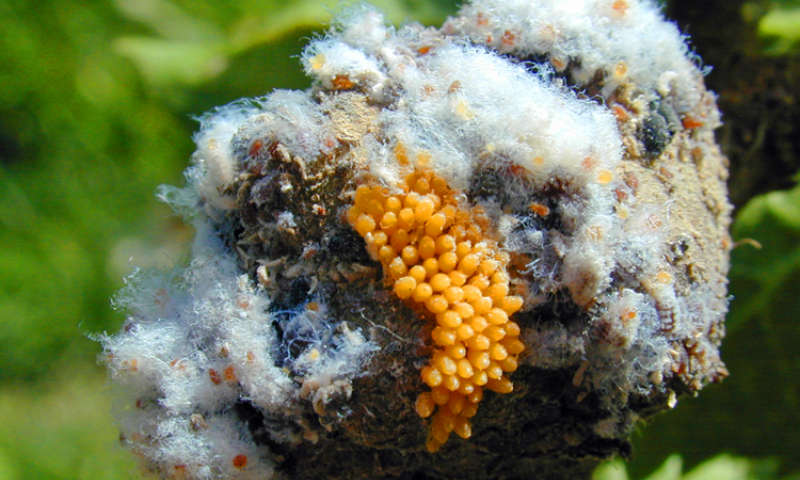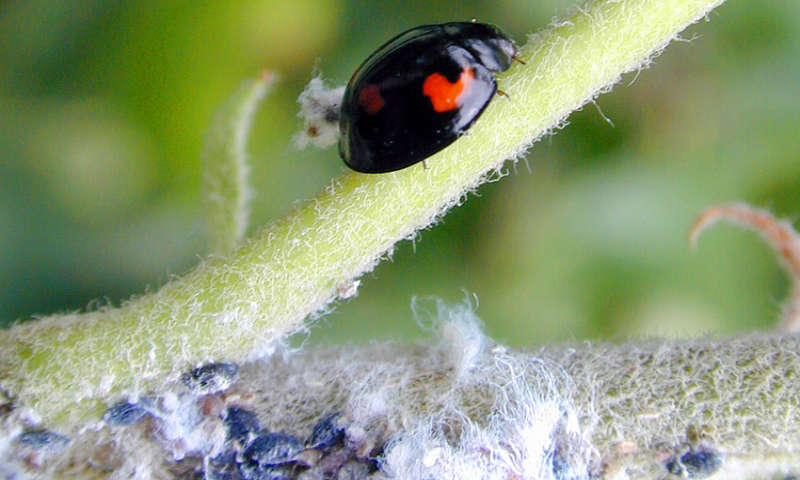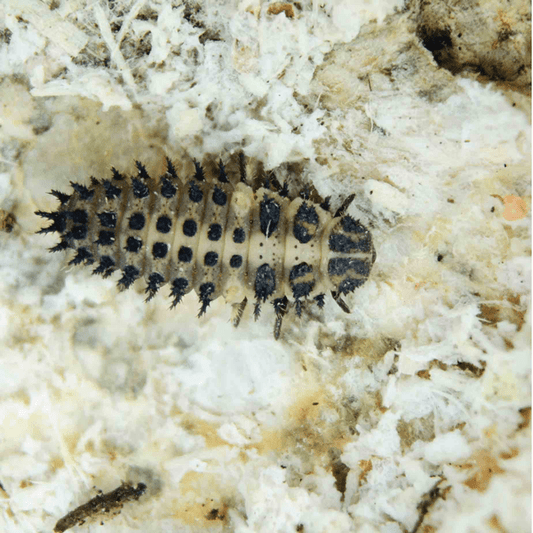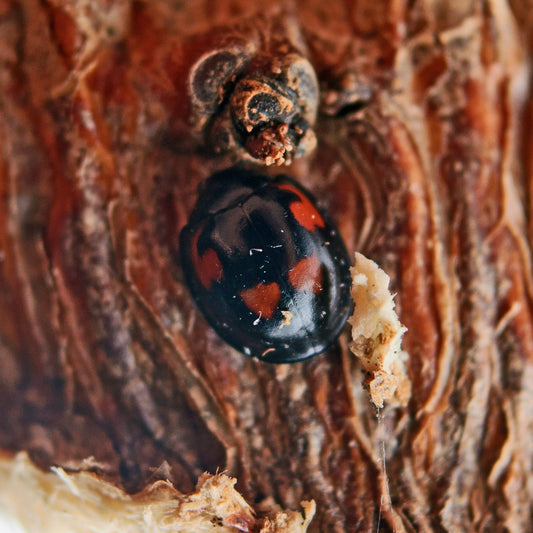
How to recognize woolly apple aphids
Woolly apple aphids are usually recognized by white and woolly masses between tree branches. Adults are purple-brown colored and around 1.8 mm in size. The siphons are very short and almost invisible. The stylet is at least as long as the body. The aphids feed only from young twigs and not the leaves. The body of individuals living aboveground is covered with long, woolly waxy threads. Nymphs have an elongated body with a pale gray to red–brown color and produce a blue-whitish waxy excretion during their development. The brown-purple eggs are also covered in wax. The aphids overwinter as nymphs on roots of their host plant, one to two meters below the ground. In mild weather conditions nymphs may also overwinter above ground in sheltered places.
Eggs can also overwinter in bark crevices. From March to April unwinged females give birth to young living nymphs. A female can produce 100 to 120 living nymphs until fall starts. Only when the colony becomes too large, often from July onwards, winged females are produced which disperse and start new colonies. One year can have 10 to 12 generations.
Woolly apple aphid damage and distribution
The sap feeding of woolly apple aphid causes gall-like structures and woody bulges (woolly apple aphid cancer). These malformations make trees more sensitive to fungal infections. Heavy attack of aphids below ground may cause root dieback which reduces growth and caneventually lead to death of young trees. The excreted honeydew can make fruits sticky. Young nymphs are very active and can move from root to aboveground plant parts and vice versa. They can also be transferred by wind or other animals.
Products against Woolly apple aphid
-
EXOCHOMUS QUADRIPUSTULATUS larvae - 50
Vendor:Entocare eigen kweekRegular price €32,50 EURRegular priceUnit price / per€32,50 EURSale price €32,50 EUR -
EXOCHOMUS QUADRIPUSTULATUS adults - 25
-
Woolly apple aphid life cycle
first offspring in March and April
colony formation
10-12 generations per year
hibernates as young aphid underground or as egg in bark -
Woolly apple aphid host plants
apple trees (Malus)
-

Woolly apple aphid with ladybug eggs
-

Exochomus adult on woolly apple aphid




